
In our interconnected digital age, cybersecurity has become a paramount concern for safeguarding your digital assets, networks, and data. This article explores essential cybersecurity practices, from robust password policies to advanced threat detection and mitigation, ensuring your online safety and protecting your digital world.
Cybersecurity is a multi-faceted discipline that incorporates a range of practices from information security, network security, and computer science, creating a cohesive protection strategy. It is crucial for mitigating financial losses, ensuring data integrity and confidentiality, and maintaining the availability of critical services and data. With the increasing reliance on the internet and digital technologies, cybersecurity has become a strategic imperative for businesses of all sizes.
The article delves into the importance of cybersecurity in today’s digital landscape, highlighting the need to protect against financial losses, data breaches, and ensure business continuity and regulatory compliance. It also examines the various cyber threats and vulnerabilities that organizations face, empowering readers to understand and address these challenges effectively.
Key Takeaways
- Cybersecurity is a multi-faceted discipline that combines practices from information security, network security, and computer science.
- Effective cybersecurity measures are essential for mitigating financial losses, ensuring data integrity and confidentiality, and maintaining business continuity.
- Understanding and addressing cyber threats and vulnerabilities is crucial for organizations to protect their digital assets.
- Implementing strong password policies, using antivirus software, and leveraging virtual private networks (VPNs) are essential cybersecurity solutions.
- Adopting a comprehensive approach to cybersecurity, including network security, cloud security, and endpoint protection, is necessary for comprehensive digital protection.
The Importance of Cybersecurity in Today’s Digital Landscape
Cybersecurity has become a critical concern in the modern, technology-driven world. With the increasing frequency and sophistication of cyber threats, such as malware, ransomware, and data breaches, the need for robust cybersecurity measures has never been more pressing. The average cost of a data breach in 2022 is a staggering $4.35 million, underscoring the financial impact that these attacks can have on businesses and individuals alike.
Mitigating Financial Losses and Data Breaches
Cyber-attacks can result in significant financial losses, not only from the direct costs of recovering from an attack but also from the disruption of business operations and the potential loss of customer trust. Effective cybersecurity measures are essential for protecting the integrity, confidentiality, and availability of sensitive data, which can be compromised in the event of a breach. By implementing robust security protocols, organizations can significantly reduce the risk of financial losses and the negative consequences associated with data breaches.
Ensuring Business Continuity and Regulatory Compliance
In addition to the financial implications, cybersecurity is crucial for maintaining business continuity and ensuring compliance with various data protection regulations, such as GDPR and HIPAA. Failure to meet compliance requirements can result in hefty fines and legal consequences, further underscoring the importance of strong cybersecurity solutions. By prioritizing cybersecurity, organizations can protect their critical assets, maintain customer trust, and avoid the potentially devastating impact of non-compliance.
Cybersecurity is not just a concern for businesses; it is also a matter of national security. Protecting critical infrastructure, government systems, and military networks from cyber threats is essential for preserving the safety and well-being of the entire population. Ongoing monitoring and threat analysis play a vital role in maintaining effective cybersecurity defenses and ensuring the resilience of these vital systems.
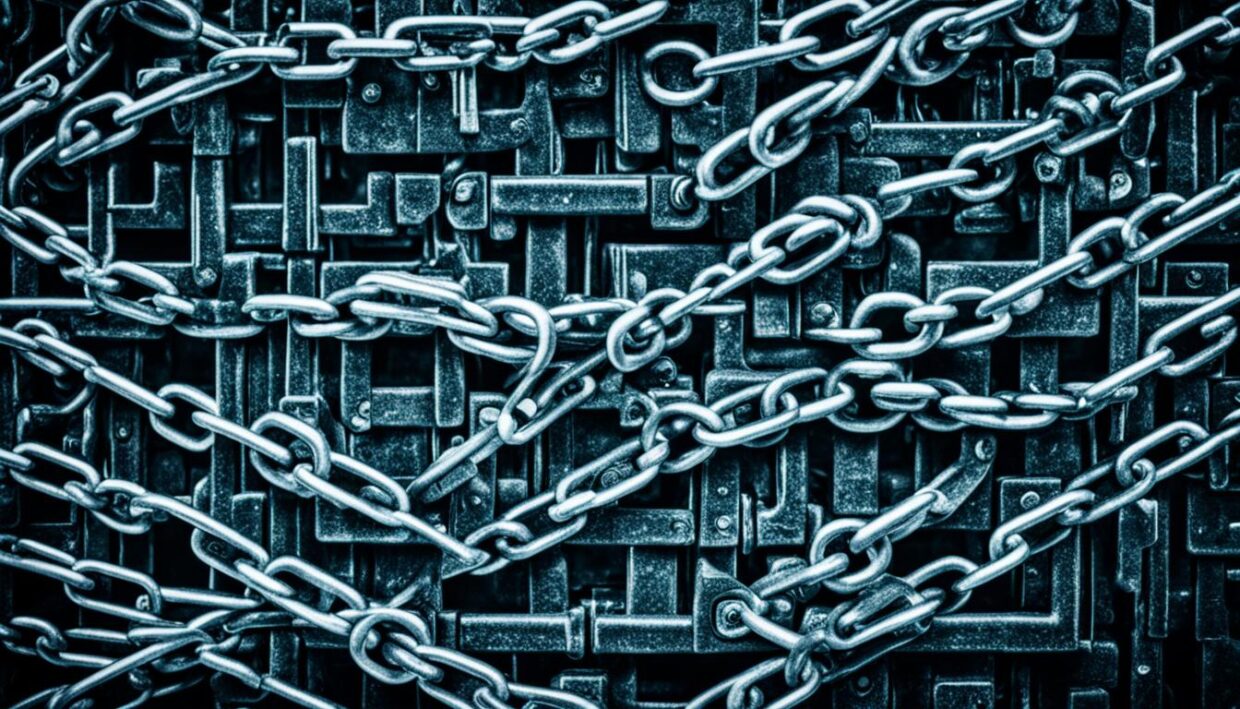
“Cybersecurity is no longer an option; it’s a necessity. The consequences of failing to protect our digital assets can be catastrophic, both financially and in terms of national security.”
Understanding Cyber Threats and Vulnerabilities
Navigating the digital landscape requires a keen understanding of the cyber threats and network vulnerabilities that organizations face. Cybercriminals are constantly devising new tactics to breach the confidentiality, integrity, and accessibility of critical digital assets. From malware attacks and social engineering schemes to supply chain compromises and denial-of-service disruptions, the cybersecurity landscape is fraught with risks that can result in significant financial losses and reputational damage.
According to recent reports, economic losses from cybercrime are projected to reach a staggering $10 trillion by 2025. Cyberattacks have become a pervasive threat, leading to data breaches that expose sensitive information for millions of individuals and businesses. Malware, including viruses, worms, Trojans, and ransomware, remains one of the most common cybersecurity threats, with Kaspersky Lab detecting an average of 250 new malware threats every minute in 2017.
Social engineering attacks, such as phishing, spear phishing, vishing, smishing, and baiting, are particularly dangerous due to their ability to exploit human vulnerabilities. These tactics aim to deceive employees into revealing sensitive data or downloading malware, providing cybercriminals with an entry point into the organization’s systems.
| Cyber Threat | Description |
|---|---|
| Malware | Malicious software, including viruses, worms, Trojans, and ransomware, designed to disrupt, damage, or gain unauthorized access to computer systems. |
| Social Engineering | Manipulative tactics, such as phishing, spear phishing, vishing, smishing, and baiting, to trick users into revealing sensitive information or performing actions that compromise security. |
| Supply Chain Attacks | Targeting software developers and vendors to infect legitimate applications and spread malware through compromised build tools, code signing procedures, or pre-installed malicious code on devices. |
| Man-in-the-Middle (MitM) Attacks | Intercepting communications between endpoints to steal data, impersonate parties, and perform other malicious activities, such as Wi-Fi eavesdropping, email hijacking, and DNS spoofing. |
| Denial-of-Service (DDoS) Attacks | Overwhelming target systems with traffic, such as websites or online services, to disrupt normal functioning and availability. |
By understanding these cyber threats and vulnerabilities, organizations can proactively implement robust cyber risk assessment measures and network vulnerabilities mitigation strategies to protect their digital assets and maintain business continuity. Staying vigilant and adopting a comprehensive cybersecurity approach is essential in navigating the evolving cyber threats landscape.

Implementing Strong Password Policies
In the digital age, your online accounts are akin to virtual fortresses, and your passwords are the keys that protect these vital assets. To safeguard your data, it is crucial to implement robust password policies that prioritize security without compromising user experience.
Length and Complexity Requirements
Experts recommend that passwords should be at least 12 characters long and incorporate a diverse mix of uppercase and lowercase letters, numbers, and special characters. This heightened password complexity makes it exponentially more challenging for cybercriminals to crack your password security. According to cybersecurity best practices, this level of complexity is the new standard for effective password policies.
Unique Passwords for Each Account
Reusing the same password across multiple accounts is a significant security risk. If one of your accounts is compromised, it leaves the rest of your digital identity vulnerable. To mitigate this threat, it is essential to use unique passwords for each and every account you maintain. This approach, known as password hygiene, is a critical component of a robust password manager strategy.
Password Manager Tools
- Utilize password manager applications like Keeper, Dashlane, or 1Password to securely generate, store, and manage your unique passwords.
- These tools eliminate the need to remember complex passwords, making it easier for employees to adhere to your organization’s password best practices.
- Password managers also streamline the process of updating passwords regularly, an essential step in maintaining the integrity of your password security measures.
By implementing a comprehensive password policy that encompasses length, complexity, and unique credentials, your organization can significantly enhance its overall cybersecurity posture and protect its digital assets from unauthorized access.

Antivirus Software and Malware Protection
In today’s digital landscape, safeguarding your devices and networks from malware threats is paramount. Investing in reputable antivirus software and malware protection solutions is a crucial step in securing your digital ecosystem.
Antivirus software plays a vital role in detecting and removing various types of malicious programs, including viruses, spyware, and ransomware. These solutions employ multiple detection methods, such as signature-based recognition and heuristic-based analysis, to identify both known and emerging virus detection and malware removal threats.
According to PCMag, which has tested 34 products in the antivirus category in the past year, Bitdefender Antivirus Plus stands out with a rare five-star rating and is the highest-rated antivirus solution. Norton AntiVirus Plus also earns a 4.5-star rating and shares the Editors’ Choice designation.
When selecting antivirus software, consider factors such as detection effectiveness, modern security features, system performance impact, compatibility, cost, and ease of use. By keeping your antivirus software up-to-date, you can ensure that your system is protected against the latest known threats, reducing the risk of successful cyberattacks.
“Antivirus software aims to detect viruses, worms, trojan horses, spyware, adware, and ransomware.”
Malware attacks pose significant risks, including data loss, financial damage, system disruption, reputation harm, and legal consequences. To mitigate these risks, individuals and organizations should implement a comprehensive malware protection strategy, including the use of antivirus solutions, regular software updates, user education, and data backups.
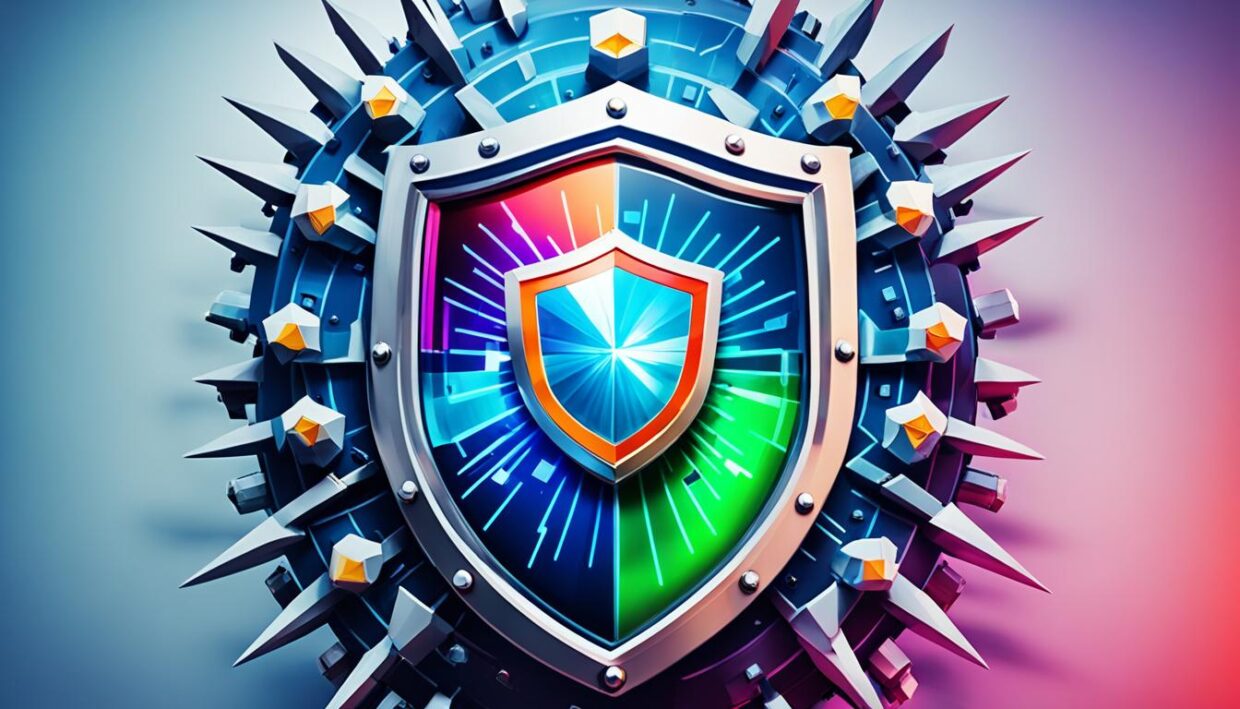
By leveraging the power of antivirus software and malware protection, you can safeguard your digital assets and maintain the integrity of your systems, ensuring business continuity and personal data security in the face of evolving cybersecurity threats.
Virtual Private Networks (VPNs) and Public Wi-Fi Security
In today’s digital landscape, the need for secure internet connectivity has never been more crucial. When using public Wi-Fi networks, your online activities and sensitive data are vulnerable to interception by cybercriminals. To mitigate these risks, utilizing a trusted Virtual Private Network (VPN) service is highly recommended.
A VPN adds a layer of security and privacy to your internet connection by encrypting your data, even when accessing public Wi-Fi hotspots. By using a VPN, you can protect your sensitive information from being intercepted or stolen by hackers who may be monitoring the public network.
Some key benefits of using a VPN for public Wi-Fi security and VPN security include:
- Encryption of your internet traffic, preventing eavesdropping and data theft
- Concealment of your IP address, shielding your online identity and location
- Protection against man-in-the-middle attacks and other cyber threats
- Secure remote access to corporate networks for remote work and productivity
When selecting a VPN service, it’s crucial to choose a reputable provider with a strong focus on privacy and data protection. Look for features like 256-bit AES encryption, secure tunneling protocols (e.g., OpenVPN, IKEv2/IPsec, WireGuard), and a no-logs policy to ensure your online activities remain private and secure.
| VPN Protocol | Encryption | Authentication | Advantages |
|---|---|---|---|
| OpenVPN | 256-bit | SSL/TLS | Industry standard for security, stability, and flexibility |
| SSTP | 256-bit | SSL/TLS Certification | Optimal for mobile VPN connections |
| IKEv2/IPsec | 256-bit | Certificate-based | Efficient for mobile devices and reliable for network changes |
| L2TP/IPsec | 256-bit | Pre-shared key | Native support in Windows operating systems |
| WireGuard | 256-bit | Cryptographic keys | Modern encryption, open-source, and mobile-friendly |
By utilizing a reliable VPN service, you can secure your internet connection and protect your sensitive data while navigating the digital world, even when accessing public Wi-Fi networks.
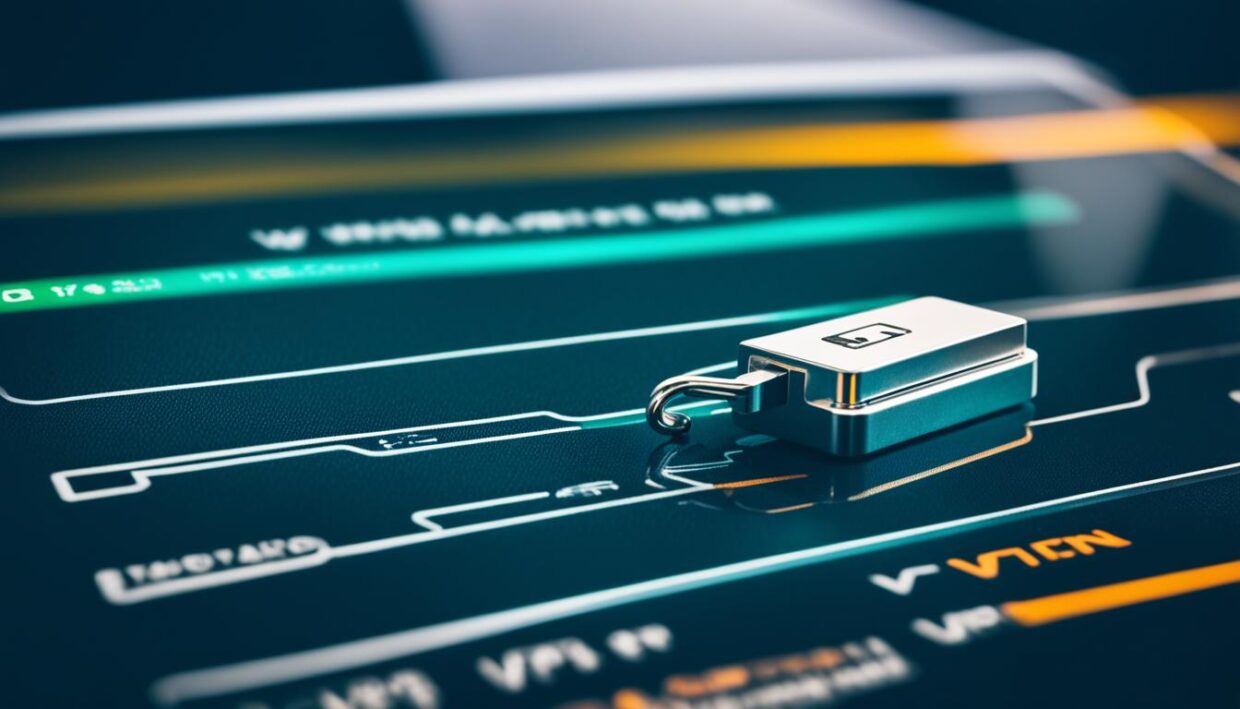
“A VPN is like a shield for your online activities, protecting your data and privacy even on public networks.”
Social Media Privacy and Two-Factor Authentication
In today’s digital landscape, social media platforms have become an integral part of our lives, allowing us to connect, share, and express ourselves. However, these platforms also present a prime target for cybercriminals seeking to exploit personal information. To protect your social media privacy, it is crucial to adjust your privacy settings and enable two-factor authentication (2FA) on your accounts.
Adjusting Privacy Settings
Social media platforms offer a range of privacy settings that allow you to control who can see your posts, personal details, and contact information. Take the time to review and customize these settings to your preference. This may include restricting access to your profile, limiting the visibility of your posts, and carefully managing the information you share publicly. By adjusting your privacy settings, you can significantly reduce the risk of unauthorized access to your personal data.
Enabling Two-Factor Authentication
Two-factor authentication is a powerful security feature that adds an extra layer of protection to your social media accounts. By enabling 2FA, you can significantly reduce the risk of unauthorized access, even if your password is compromised. This process typically involves sending a one-time verification code to your phone or using an authenticator app to confirm your identity when logging in.
With over 1.3 billion people logging on to social media every month, these platforms have become a prime target for cybercriminals. By adjusting your privacy settings and enabling two-factor authentication, you can safeguard your personal information and enjoy the benefits of social media with greater peace of mind.

“Two-factor authentication is becoming more popular, with an increasing number of sites and apps offering this security feature.”
Identifying and Avoiding Phishing Attempts
Phishing attacks, where cybercriminals use deceptive emails to trick individuals into revealing sensitive information or executing harmful actions, pose a significant threat. To protect yourself and your organization, it is crucial to learn how to recognize the characteristics of phishing emails.
Recognizing Phishing Email Characteristics
Phishing emails often exhibit telltale signs, such as spelling mistakes, poor grammar, and urgent requests for information or action. Be wary of emails that create a sense of urgency or fear, prompting you to click on links or open attachments without verifying their legitimacy.
Reporting Malicious Emails
If you receive a suspicious email, do not click on any links or open attachments. Instead, report the malicious email to your organization’s security team. By staying vigilant and reporting potential phishing attempts, you can help strengthen your company’s defenses against these social engineering attacks.
According to the Federal Bank, Thrift and Credit Union Regulatory Agencies, phishing attacks are a growing concern, with scammers launching thousands of these attacks every day. By recognizing the signs of phishing and taking prompt action, you can play a vital role in phishing prevention and email security, protecting both yourself and your organization from social engineering attacks.
| Reporting Suspicious Contacts | Contact Information |
|---|---|
| Equifax fraud division | 800-525-6285 |
| Experian fraud division | 888-397-3742 |
| TransUnion fraud division | 800-680-7289 |
| Federal Trade Commission | 1-877-IDTHEFT |
Remember, by remaining vigilant and reporting suspicious emails, you can contribute to the ongoing fight against phishing and safeguard your digital world.

Network Security Solutions
Protecting your network is a vital component of a comprehensive cybersecurity strategy. Network security solutions offer a robust defense against cyber threats, safeguarding your digital infrastructure and sensitive data. These solutions encompass a range of tools and technologies designed to mitigate various security risks.
Firewalls and Intrusion Detection Systems
Firewalls act as a barrier between your internal network and external threats, filtering traffic based on predefined security rules. They help block unauthorized access and prevent malicious activities from infiltrating your network. Intrusion detection and prevention systems (IDS/IPS), on the other hand, continuously monitor network traffic for suspicious activities and swiftly block potential threats, ensuring your network remains secure.
Network Access Control and Data Loss Prevention
Network access control (NAC) regulates who can access your network, ensuring that only compliant devices are allowed. By implementing NAC, you can prevent unauthorized access and maintain the integrity of your network. Data loss prevention (DLP) measures, meanwhile, safeguard sensitive data from unauthorized access or leakage, protecting your organization from the consequences of data breaches.
By deploying a comprehensive suite of network security solutions, you can significantly reduce the risk of cyber threats and protect the confidentiality, integrity, and availability of your digital assets. These solutions work together to create a multi-layered defense, ensuring your network remains secure and resilient in the face of evolving cyber threats.
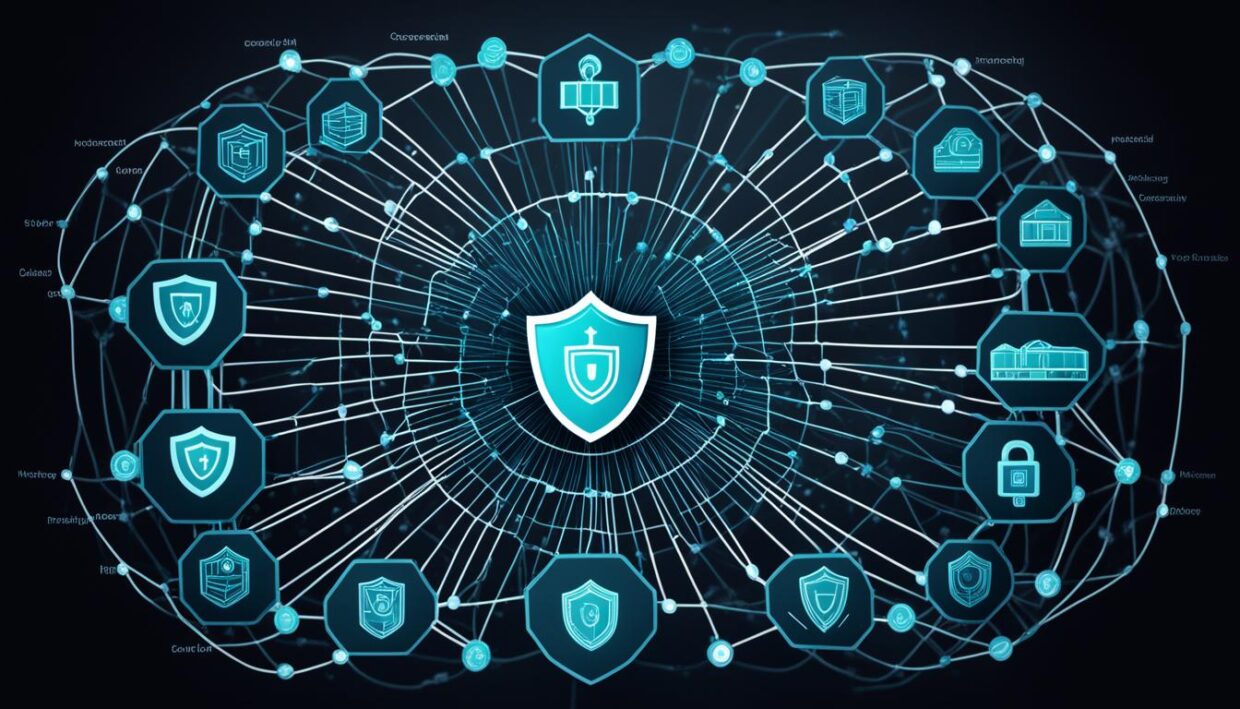
“Investing in network security solutions is not just a necessity, but a strategic business decision that can help organizations mitigate financial losses, ensure business continuity, and maintain regulatory compliance.”
| Network Security Solution | Key Features | Benefits |
|---|---|---|
| Firewalls |
|
|
| Intrusion Detection and Prevention Systems (IDS/IPS) |
|
|
| Network Access Control (NAC) |
|
|
| Data Loss Prevention (DLP) |
|
|
Cloud Security and Protecting Cloud Environments
As businesses increasingly migrate their operations to the cloud, securing these cloud environments has become a crucial priority. Cloud security involves implementing robust policies, controls, and technologies to protect data, applications, and the underlying cloud infrastructure. This includes measures such as data encryption, identity and access management, and secure configuration of cloud services.
By adopting comprehensive cloud security solutions, organizations can ensure the confidentiality, integrity, and availability of their critical data and applications stored in the cloud, mitigating the risk of data breaches and unauthorized access. According to a study by Venafi, more than 80% of companies experienced at least one cloud security incident in 2022, underscoring the growing need for effective cloud security measures.
The shared responsibility model in cloud security defines the responsibilities between the cloud service provider and the customer, varying based on the cloud service model used. This model helps organizations understand their specific security obligations and ensure that all critical aspects of cloud security are addressed.
Some of the key cloud security challenges for organizations include lack of visibility, misconfigurations, access management issues, dynamic workloads, and compliance difficulties. To address these challenges, businesses can leverage a range of cloud security solutions, such as identity and access management (IAM), encryption, data loss prevention (DLP), network security, security information and event management (SIEM), and cloud-native security tools.
By investing in robust cloud security, organizations can benefit from greater visibility, centralized security management, reduced costs, improved data protection, compliance adherence, and advanced threat detection. As the global cloud storage market continues to grow, expected to exceed $100 billion in 2023, ensuring the security of cloud environments has become a critical priority for businesses of all sizes.
“Protecting cloud environments is essential for businesses in the digital age. By implementing comprehensive cloud security solutions, organizations can safeguard their sensitive data and ensure business continuity in the face of evolving cyber threats.”
Leading cloud security providers, such as CrowdStrike, Tufin, SailPoint, Duo Security, and Cloudflare, offer a range of solutions and services to help organizations secure their cloud environments. These innovative companies are at the forefront of cloud security, providing cutting-edge technologies and expertise to help businesses navigate the complexities of the cloud landscape.
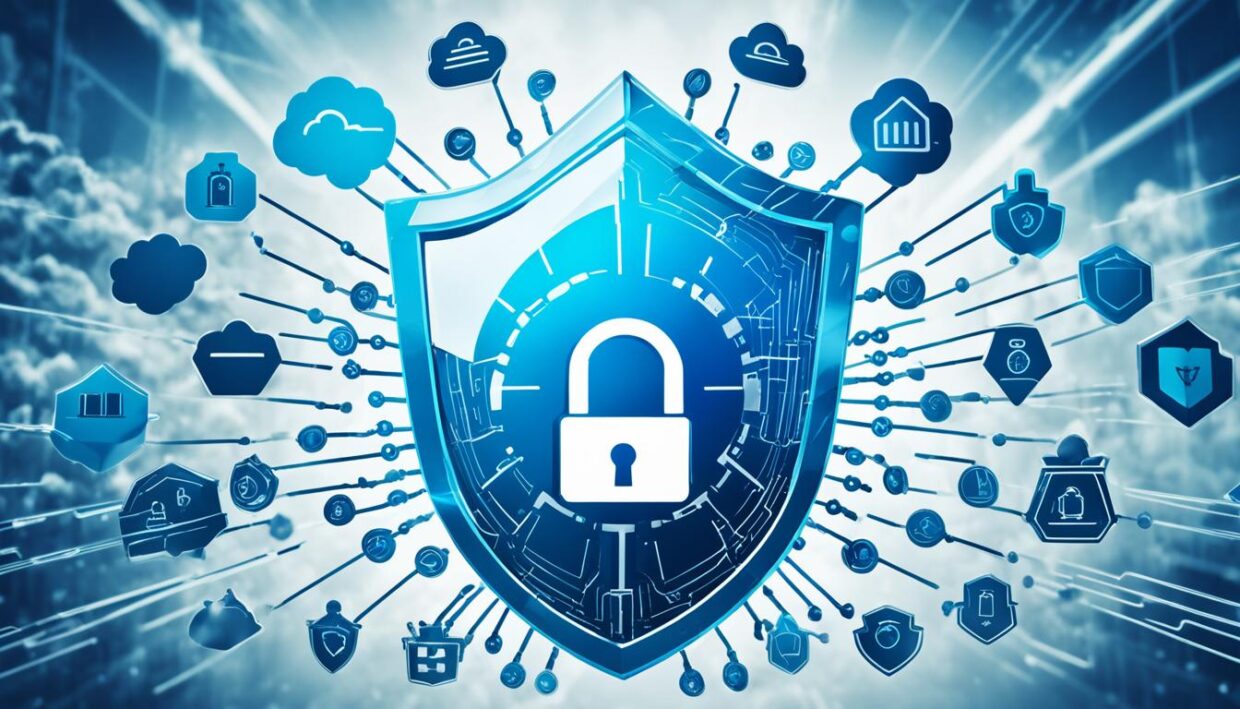
Endpoint Security and Mobile Device Protection
In today’s digital landscape, endpoints such as laptops, desktops, and mobile devices are the weakest links in an organization’s cybersecurity posture. Endpoint security solutions, including the adoption of a zero-trust model, are essential for protecting these devices from various threats. Endpoint detection and response (EDR) tools provide continuous monitoring and response capabilities to detect and address threats on individual devices.
Protecting mobile devices is crucial, as 46% of respondents encountered a mobile-related security compromise in the last year, according to the 2021 Mobile Security Report by Verizon. Measures like data security controls, anti-phishing and anti-ransomware protections, and mobile device management (MDM) help safeguard sensitive information and prevent unauthorized access to corporate resources from mobile devices.
| Endpoint Security Solutions | Benefits |
|---|---|
| Cloud Access Security Broker (CASB) | Enforces security policies for cloud-based applications and data |
| Endpoint Protection Platform | Offers continuous protection of devices across the network |
| Virtual Private Network (VPN) | Creates secure connections for browsing the internet anonymously |
| Secure Web Gateway | Filters web access to enforce internet policies |
| Email Security | Protects data transmitted through emails with tools like antivirus programs and filters |
| Mobile Device Management (MDM) | Enforces security policies on mobile devices to manage and secure them |
Regular employee training on mobile security best practices is also imperative, especially for recognizing phishing and social engineering attempts. Advanced solutions like FortiEDR offer continuous monitoring of endpoint activities, automated threat detection and response, and detailed forensic analysis to help defend against advanced attacks.

Endpoint security and mobile device protection are crucial in today’s digital world, where 85% of breaches involved a form of malware, and 36% were due to phishing attacks. By implementing a comprehensive endpoint security strategy, organizations can safeguard their digital assets and ensure business continuity in the face of ever-evolving cyber threats.
Internet of Things (IoT) Security and Connected Device Management
The rapid proliferation of Internet of Things (IoT) devices in homes, businesses, and industrial settings introduces new and complex cybersecurity challenges. These connected devices, ranging from smart home appliances to industrial automation systems, have become prime targets for cyber threats, posing significant risks to data security, system integrity, and user privacy.
IoT security solutions focus on securing these connected devices by implementing robust strategies such as device discovery, auto-segmentation, and firmware protection. By proactively identifying and classifying IoT devices within a network, organizations can better understand and control their activities, limiting the potential impact of a breach.
Auto-segmentation, a key IoT security feature, isolates devices into distinct network zones based on their function and risk profile. This approach restricts the lateral movement of threats, preventing a single compromised device from infecting the entire network. Additionally, protecting the firmware of IoT devices from unauthorized modifications is crucial, as vulnerabilities in this core component can be exploited to gain control of the device and launch wider attacks.
Effective IoT security requires a comprehensive approach that addresses the unique challenges posed by the diverse and constantly evolving landscape of connected devices. By implementing robust IoT security solutions, organizations can safeguard their digital ecosystems, prevent data breaches, and maintain the integrity of their operations, ultimately ensuring the reliability and resilience of their connected infrastructure.
| IoT Security Measures | Key Benefits |
|---|---|
| Device Discovery and Inventory | Gain visibility and control over all connected devices within the network |
| Auto-Segmentation | Isolate devices based on risk profile to limit the spread of threats |
| Firmware Protection | Prevent unauthorized modifications and ensure the integrity of IoT device software |
| Secure Communication Protocols | Implement end-to-end encryption to protect data transmitted by IoT devices |
| Automated Patching and Updates | Ensure timely application of security updates to address known vulnerabilities |
By adopting a comprehensive IoT security strategy, organizations can mitigate the risks posed by these connected devices, safeguarding their digital infrastructure and maintaining the trust of their customers and stakeholders.
“Securing the Internet of Things is not just a technological challenge, but a critical imperative for businesses and individuals alike in the digital age.”

Application Security and Web Application Vulnerabilities
In today’s digital landscape, web applications have become a prime target for cyber attacks, making application security a critical component of a comprehensive cybersecurity strategy. Web application vulnerabilities can lead to devastating consequences for organizations, such as unauthorized access, data breaches, and financial losses.
One of the most widely recognized frameworks for addressing web application security is the OWASP (Open Web Application Security Project) Top 10, which identifies the most critical security risks facing web-based applications. These risks include injection flaws, such as SQL injection and cross-site scripting (XSS), as well as misconfigurations, broken access control, and security logging and monitoring failures.
Beyond the OWASP Top 10, protecting web applications from bot attacks and securing APIs are also essential to prevent unauthorized access and data breaches. Bot attacks, which involve the use of automated software to interact with web applications, can overwhelm systems, steal data, and disrupt operations. Securing APIs, which are the backbone of modern web applications, is crucial to prevent attackers from exploiting vulnerabilities and gaining unauthorized access to sensitive information.
To effectively address application security, organizations must adopt a proactive approach that includes continuous learning and updates to their security measures. By staying informed about the latest web application vulnerabilities and implementing robust security controls, businesses can stay ahead of evolving threats and protect their digital assets.
| OWASP Top 10 2021 Ranking | Risk |
|---|---|
| 1 | Broken Access Control |
| 2 | Cryptographic Failures |
| 3 | Injection |
| 4 | Insecure Design |
| 5 | Security Misconfiguration |
By addressing the OWASP Top 10, implementing robust bot detection and API security measures, and continuously monitoring and updating security controls, organizations can effectively protect their web-based applications from the most critical threats in the digital landscape.
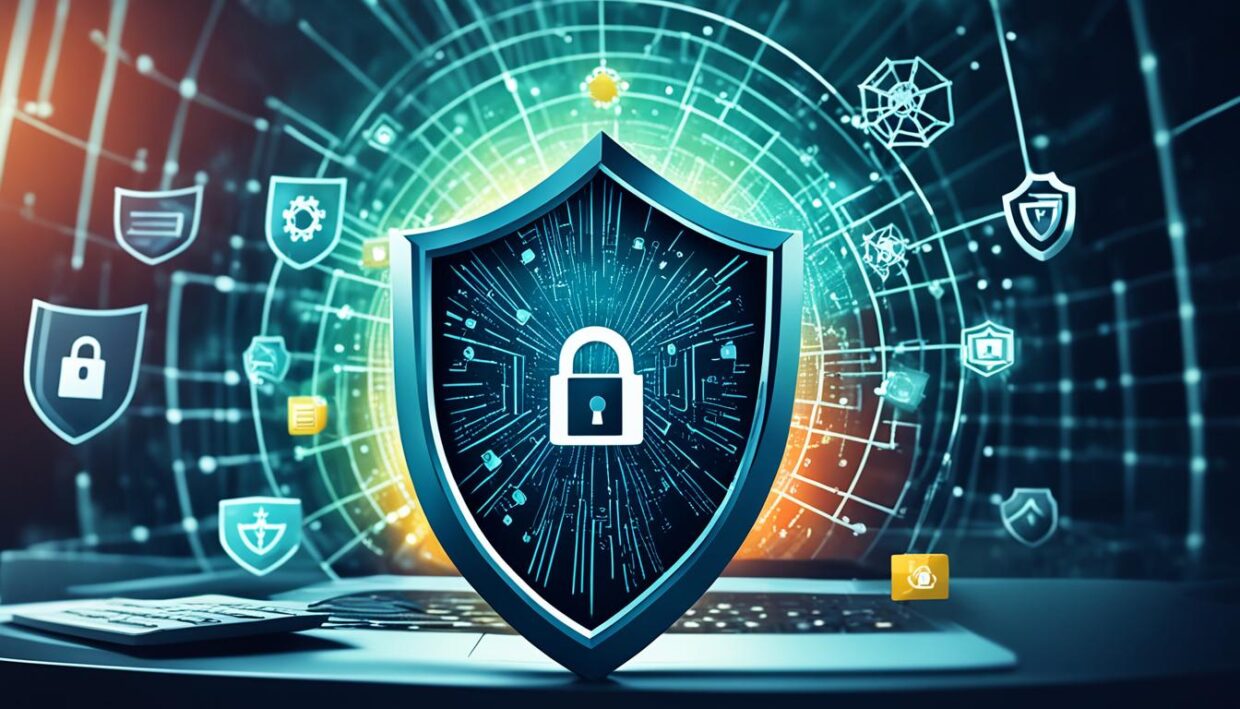
“Cybersecurity is not just a technology problem, it’s a business problem. Securing web applications is crucial for protecting the lifeblood of modern organizations.”
Cybersecurity Solutions and Choosing the Right Ones
Selecting the appropriate cybersecurity solutions for your organization is a critical step in safeguarding your digital assets. The process begins with conducting a thorough risk assessment to identify the specific threats and vulnerabilities your business faces. This comprehensive evaluation will help you determine the necessary security measures and solutions to address those risks effectively.
When evaluating potential cybersecurity solutions, it’s essential to consider the cost-benefit analysis. Ensure that the investment aligns with your budget and the potential impact of a security breach. Additionally, scalability and user-friendliness are crucial factors to consider, as your chosen solutions must be able to accommodate the growth of your business and be easily implemented and managed by your team.
Conducting Risk Assessments
A comprehensive risk assessment is the foundation for selecting the right cybersecurity solutions. By identifying the specific threats and vulnerabilities your organization faces, you can tailor your security measures to address these concerns effectively. This process involves analyzing your digital assets, assessing the likelihood and potential impact of various cyber threats, and developing a plan to mitigate the identified risks.
Evaluating Solution Needs and Costs
When choosing cybersecurity solutions, it’s crucial to carefully examine your organization’s needs and the associated costs. Conduct a thorough cost-benefit analysis to ensure that the investment in cybersecurity solutions aligns with your budget and the potential impact of a security breach. This analysis will help you make informed decisions and prioritize the most critical security measures.
Scalability and User-Friendliness
As your business grows, your cybersecurity solutions must be able to scale to accommodate the increased demands. Look for solutions that are scalable and can adapt to the changing needs of your organization. Additionally, ensure that the chosen solutions are user-friendly, allowing your team to implement and manage them effectively, reducing the risk of human error and maximizing the return on your investment.
By carefully considering these factors, you can build a robust and comprehensive cybersecurity framework that protects your digital assets and supports the long-term success of your organization.

Zero Trust Security Model and Micro-Segmentation
As cybersecurity threats become increasingly sophisticated, organizations are turning to the Zero Trust security model as a robust defense strategy. This model operates on the principle of “never trust, always verify,” assuming that threats can originate from both inside and outside the network. By implementing a Zero Trust framework, businesses can enhance their overall security posture and better protect their digital environments from potential breaches.
A key component of the Zero Trust approach is micro-segmentation, a technique that divides the network into smaller, isolated segments. This granular level of control limits the spread of threats and restricts access to sensitive data and resources based on user roles and permissions. Micro-segmentation enables zero trust security, ensuring that only authorized users and devices can access specific applications or services, regardless of their location or network connection.
- Micro-segmentation helps detect and prevent lateral movement of threats within networks by enforcing strict access controls and monitoring user and device activities.
- It provides asset discovery, application and service modeling, execution, optimization, and an alternative in scenarios where network segmentation may not be needed.
- Micro-segmentation solutions can automatically discover network-connected devices and applications, synchronizing this data with cloud management platforms for enhanced visibility and control.
By adopting a zero trust security model and leveraging micro-segmentation, organizations can significantly reduce the risk of data breaches and ensure that their digital environments remain secure. This approach, combined with other cybersecurity measures, such as strong role-based access control and network segmentation, provides a comprehensive defense against the evolving threat landscape.
“Zero trust is a high-concept cybersecurity strategy intended to strengthen defenses across multi-cloud, distributed data centers.”

Conclusion
In our increasingly interconnected digital world, cybersecurity is no longer a luxury but a necessity for businesses of all sizes. By understanding the evolving cyber threats, vulnerabilities, and the critical components of comprehensive cybersecurity best practices, organizations can take proactive measures to safeguard their digital assets, protect their bottom line, and maintain the trust of their customers.
From implementing robust password policies and utilizing cutting-edge antivirus software to adopting advanced comprehensive security solutions and embracing the Zero Trust security model, the strategies and tools discussed in this article provide a robust framework for securing your digital asset protection. As technology continues to advance and the threat landscape becomes more complex, staying informed and vigilant about cybersecurity best practices is crucial for the long-term success and resilience of your organization.
By leveraging the insights and recommendations presented here, businesses can navigate the ever-changing cybersecurity landscape with confidence, ensuring the integrity and continuity of their operations while safeguarding the sensitive data entrusted to them. Embrace a proactive and comprehensive approach to cybersecurity, and unlock the full potential of your digital ecosystem.



















Be the first to leave a comment